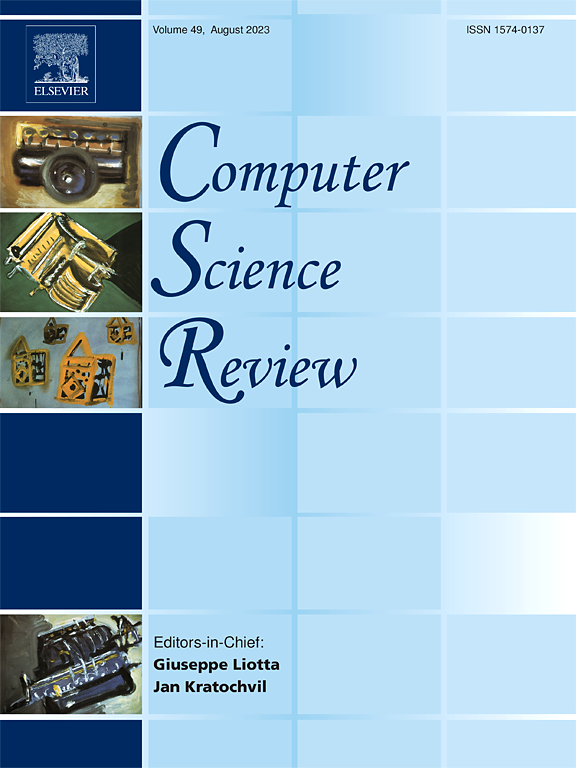双曲几何图形表示学习综述
IF 12.7
1区 计算机科学
Q1 COMPUTER SCIENCE, INFORMATION SYSTEMS
引用次数: 0
摘要
图表示学习是一项关键技术,它将图数据转换为低维向量表示,大大增强了各种机器学习任务。传统的欧几里得空间在表示图结构时经常面临维数的困扰,特别是对于具有复杂关系的图数据。双曲几何作为非欧几里得几何的一种形式,具有更精确地捕获非线性关系和层次结构的图数据的优越能力,是处理复杂图数据的有效工具。为了促进未来的研究,本文对双曲几何中图形表示学习的文献进行了全面的综述。通过将不同结构的图数据嵌入到不同的几何空间中,提出了一种新的双曲图表示方法,包括双曲空间图表示学习和空间融合图表示学习。此外,它还强调了双曲几何表示学习在知识图谱、推荐系统、生物分子分析和自然语言处理等各个领域的应用,同时探索了潜在的未来研究方向。本文章由计算机程序翻译,如有差异,请以英文原文为准。
Hyperbolic geometric graph representation learning: A survey
Graph representation learning is a crucial technology, which converts graph data into low-dimensional vector representations and significantly enhances various machine learning tasks. Traditional Euclidean space often faces the curse of dimensionality when representing graph structures, especially for graph data possessing complex relationships. Hyperbolic geometry, as a form of non-Euclidean geometry, has superior capabilities to more accurately capture the graph data of nonlinear relationships and hierarchical structures, making it an effective tool for handling complex graph data. To stimulate future research, this paper presents a comprehensive reviews of literature around the graph representation learning in hyperbolic geometry. We offer a new taxonomy of hyperbolic graph representation methods by embedding graph data with different structures into various geometric spaces, including hyperbolic space graph representation learning and spatial fusion graph representation learning. Moreover, it emphasizes the applications of hyperbolic geometric representation learning across various domains, such as knowledge graphs, recommendation systems, biomolecular analysis, and natural language processing, while also exploring potential future research directions.
求助全文
通过发布文献求助,成功后即可免费获取论文全文。
去求助
来源期刊

Computer Science Review
Computer Science-General Computer Science
CiteScore
32.70
自引率
0.00%
发文量
26
审稿时长
51 days
期刊介绍:
Computer Science Review, a publication dedicated to research surveys and expository overviews of open problems in computer science, targets a broad audience within the field seeking comprehensive insights into the latest developments. The journal welcomes articles from various fields as long as their content impacts the advancement of computer science. In particular, articles that review the application of well-known Computer Science methods to other areas are in scope only if these articles advance the fundamental understanding of those methods.
 求助内容:
求助内容: 应助结果提醒方式:
应助结果提醒方式:


